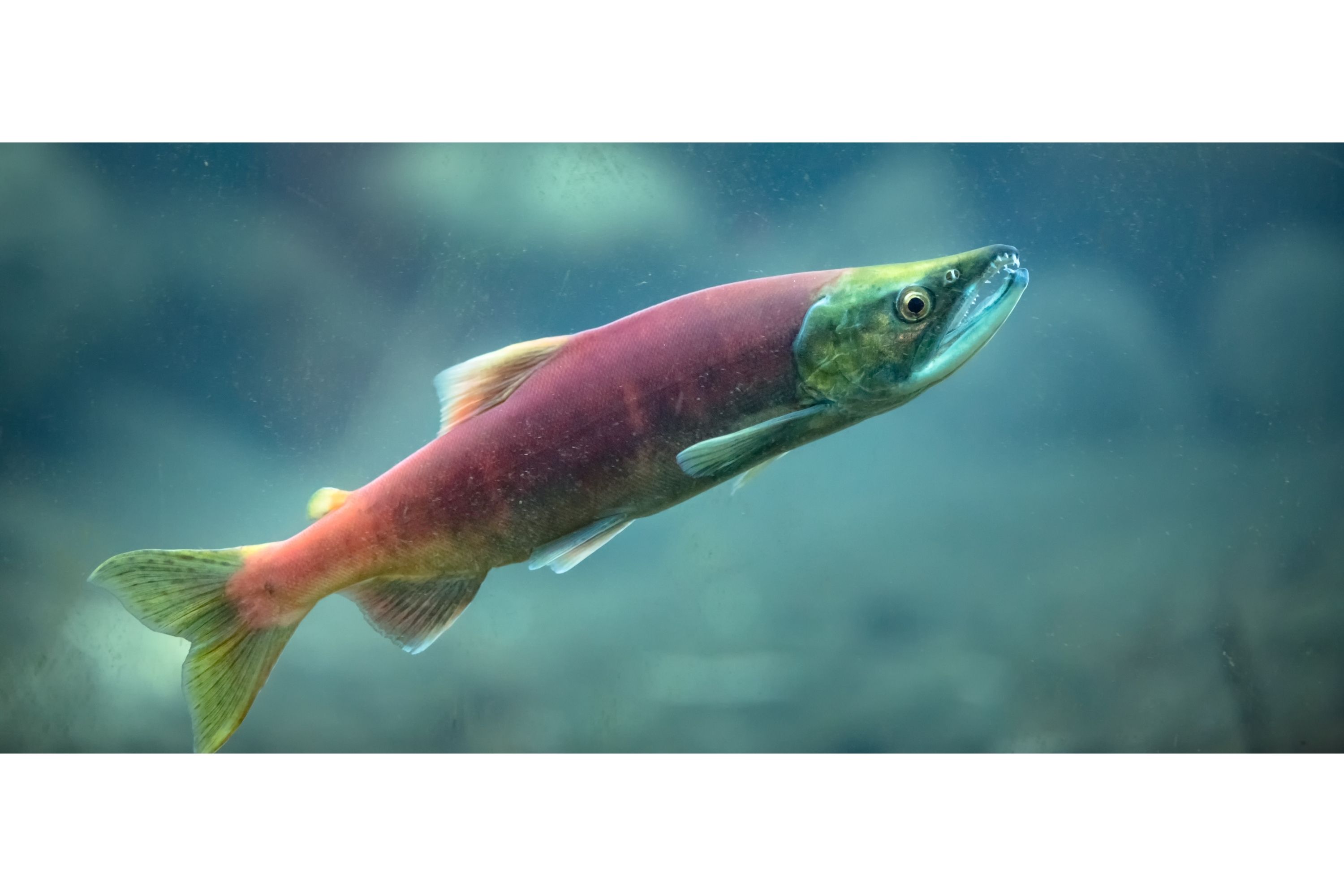Sockeye salmon
(Oncorhynchus nerka)

Description
The sockeye salmon (Oncorhynchus nerka), also called red salmon, kokanee salmon, or blueback salmon, is an anadromous species of salmon found in the Northern Pacific Ocean and rivers discharging into it. This species is a Pacific salmon that is primarily red in hue during spawning. They can grow up to 84 cm (2 ft 9 in) in length and weigh 2.3 to 7 kg (5-15 lb). Juveniles remain in freshwater until they are ready to migrate to the ocean, over distances of up to 1,600 km (1,000 mi). Their diet consists primarily of zooplankton. Sockeye salmon are semelparous, dying after they spawn. Some populations, referred to as kokanee, do not migrate to the ocean and live their entire lives in fresh water. The sockeye salmon is sometimes called red or blueback salmon, due to its color. Sockeye are blue tinged with silver in color while living in the ocean. When they return to spawning grounds, their bodies become red and their heads turn green. Sockeye can be anywhere from 60 to 84 cm (2 ft 0 in 2 ft 9 in) in length and weigh from 2.3 to 7 kg (5-15 lb). Two distinguishing features are their long, serrated gill rakers that range from 30 to 40 in number, and their lack of a spot on their tail or back. Sockeye salmon range as far south as the Columbia River in the eastern Pacific (although individuals have been spotted as far south as the 10 Mile River on the Mendocino Coast of California) and in northern Hokkaidō Island in Japan in the western Pacific. They range as far north as the Bathurst Inlet in the Canadian Arctic in the east and the Anadyr River in Siberia in the west. The farthest inland sockeye salmon travel is to Redfish Lake, Idaho, over 1,400 km (900 mi) by river from the ocean and 2,000 m (6,500 ft) in elevation. In the United States, populations of sockeye salmon have been extirpated from Idaho and Oregon. Some sockeye salmon populations are completely landlocked. Sockeye that live and reproduce in lakes are commonly called kokanee, which is red-fish name in the Sinixt Interior Salish language and silver trout in the Okanagan language. They are much smaller than the anadromous variety and are rarely over 35 cm (14 in) long. In the Okanagan Lake and many others, there are two kinds of kokanee populations one spawns in streams and the other near lake shores.
Taxonomic tree:







